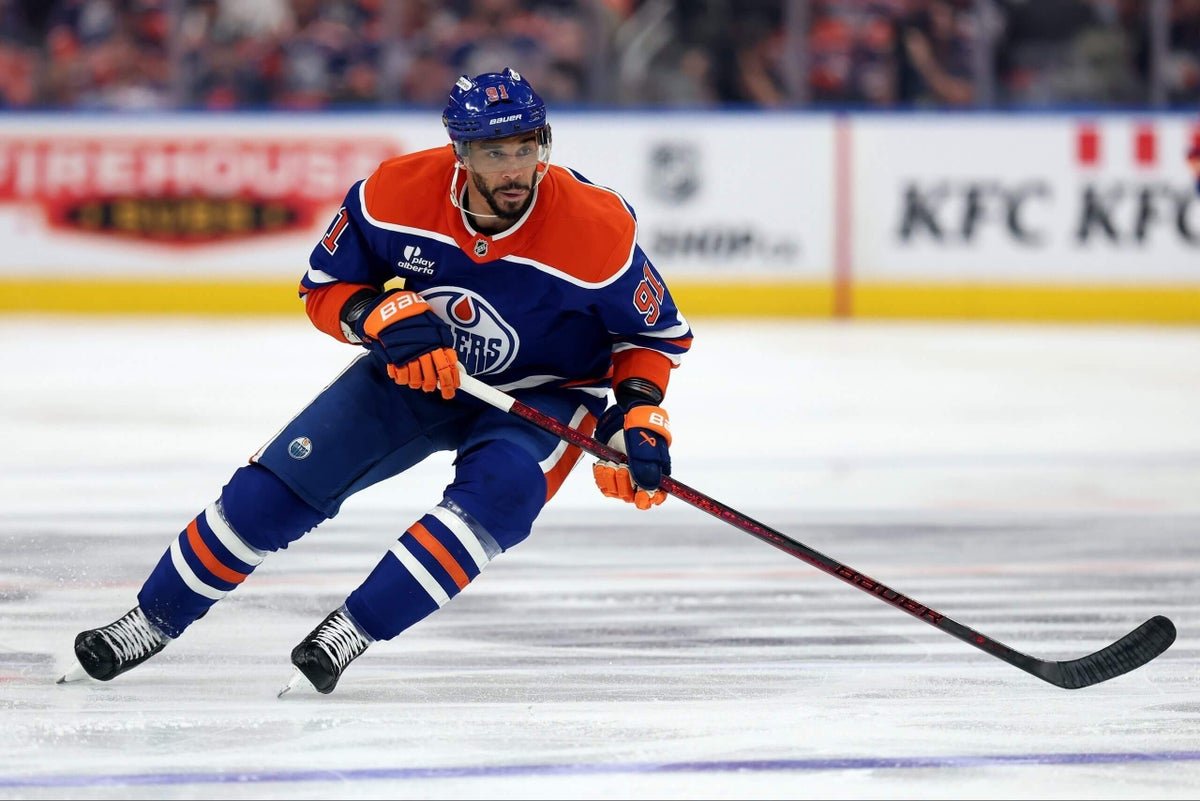Trading Evander Kane was always the most likely and logical outcome for the Edmonton Oilers.
Though they’ll miss the combination of Kane’s scoring and power-forward abilities, the pros of no longer having him on the roster or his cap hit on the books outweigh the cons. That there was a market — even a limited one, thanks to Kane’s partial no-trade clause — to ditch his entire $5.125 million cap hit on the last year of his contract meant the Oilers had to capitalize.
They’re expected to have a built-in, cheaper and younger replacement at the ready once Trent Frederic re-signs — albeit someone without the same track record for offence. Kane turns 34 in August, whereas Frederic is 27.
There’s little downside here. Getting a fourth-round pick from Vancouver isn’t much, but it’s not unexpected since Dallas got a third and fourth from Seattle for Mason Marchment last week. Marchment makes $625,000 less than Kane with the same one-year term on his deal and is nearly four years younger.
Most importantly, the Oilers accomplished something they needed to do. Clearing money will help in their attempts to upgrade the goaltending position, re-sign No. 1 blueliner Evan Bouchard and fill out the rest of the roster.
But moving out Kane is only the first domino to fall in the offseason makeover for the Oilers. And it’s how the next one drops that’ll truly determine what they can accomplish this summer — and how much better they’ll be by the time next season starts.
The Oilers now have just over $16 million in cap space, per PuckPedia, but that’s before Frederic’s new contract hits the books.
Punting Kane and retaining Frederic will net the Oilers no more than $1.5 million in savings on the cap. That’s the cost of bringing back Corey Perry — if that comes to pass — or adding another bottom-six player. It’s adding a little more to the coffers — the Oilers should be in the $13.2 million to $13.5 million range — but there’s still a lot to be done.
Even if Bouchard signs for a lower AAV on a four-year contract, as The Athletic’s Pierre LeBrun reported might be the play, the team’s top defenceman will easily consume more than half of the remaining cap space.
Any cost of bringing in a new goaltender would be whittled down a bit by removing either Stuart Skinner’s $2.6 million cap hit or Calvin Pickard’s $1 million salary. But the Oilers are going to have to take on more money to upgrade between the pipes.
That’ll leave precious little left to round out the roster, whether that’s finding a depth right-handed centreman and bringing back Perry and/or Connor Brown.
Really, it’s how GM Stan Bowman handles what seems like an inevitable Viktor Arvidsson exit that’ll likely determine if the Oilers can get another intriguing middle-six, or even top-six, forward.
Arvidsson and pending UFA Jeff Skinner were the team’s two biggest signings on last July 1, and neither winger panned out as planned. Both were scratched during the playoffs, including in the Stanley Cup Final.
It’s Arvidsson, however, who has another year on his $4 million AAV contract. He also has a no-movement clause, which limits his market. Arvidsson was openly displeased to be held out of the lineup during the postseason, so there’s a belief that a trade can be facilitated. He can dictate the terms of any trade, though, thanks to his contract status.
The 32-year-old had 15 goals and 27 points in 67 games while getting ample time next to Hart Trophy runner-up Leon Draisaitl. He had two goals and seven points in 15 postseason contests.
The Oilers are not expected to use a buyout on Arvidsson. As with Kane, not retaining any money to deal him is more important than whatever paltry return they’re bound to receive.
Clearing $4 million allows management to gain some flexibility to truly change the roster. Kane started that process, but Arvidsson could kick it into overdrive.
(Photo: Steph Chambers / Getty Images)




